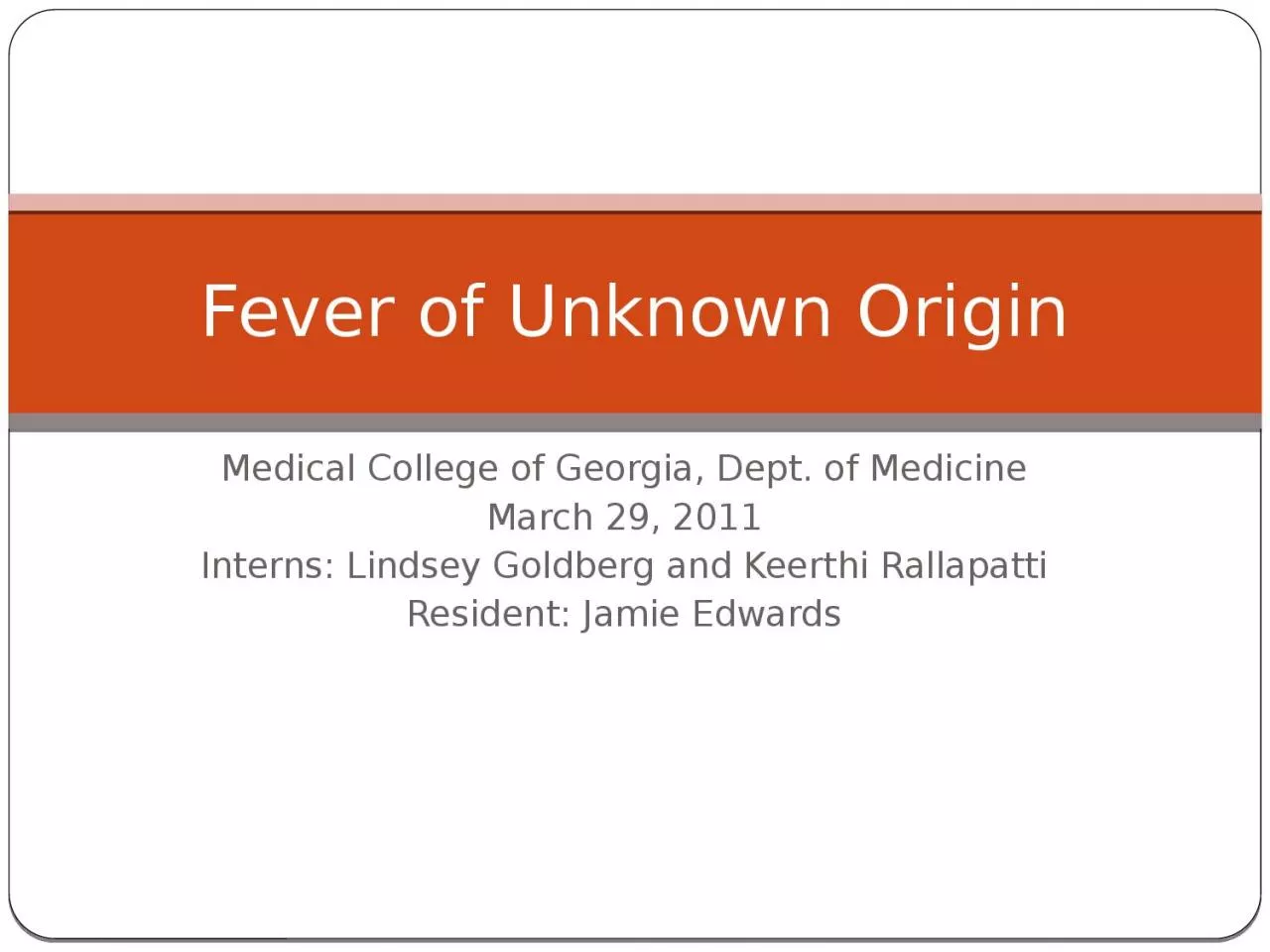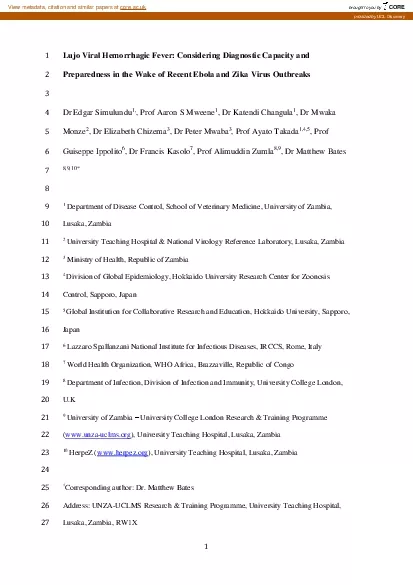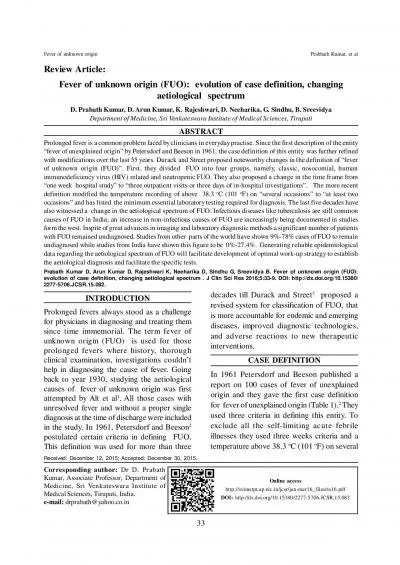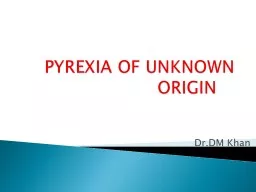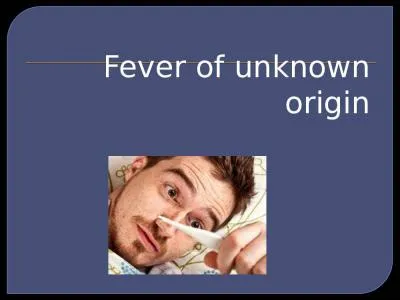PPT-Fever of Unknown Origin Medical College of Georgia, Dept. of Medicine
Author : hadley | Published Date : 2022-06-14
March 29 2011 Interns Lindsey Goldberg and Keerthi Rallapatti Resident Jamie Edwards History of Present Illness 42 yo AAM presents as a transfer from Dublin VA
Presentation Embed Code
Download Presentation
Download Presentation The PPT/PDF document "Fever of Unknown Origin Medical College ..." is the property of its rightful owner. Permission is granted to download and print the materials on this website for personal, non-commercial use only, and to display it on your personal computer provided you do not modify the materials and that you retain all copyright notices contained in the materials. By downloading content from our website, you accept the terms of this agreement.
Fever of Unknown Origin Medical College of Georgia, Dept. of Medicine: Transcript
Download Rules Of Document
"Fever of Unknown Origin Medical College of Georgia, Dept. of Medicine"The content belongs to its owner. You may download and print it for personal use, without modification, and keep all copyright notices. By downloading, you agree to these terms.
Related Documents

